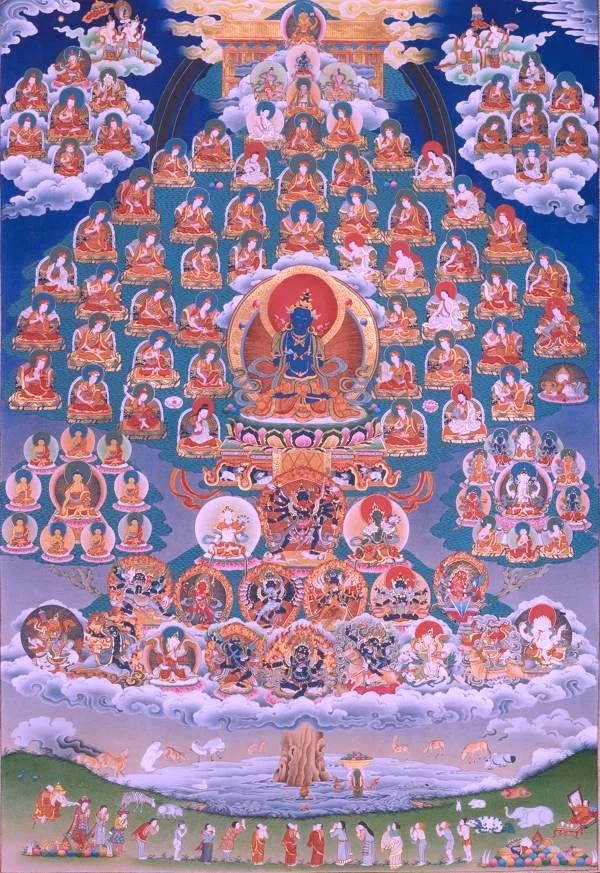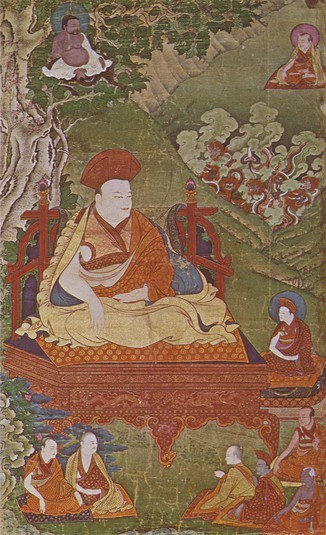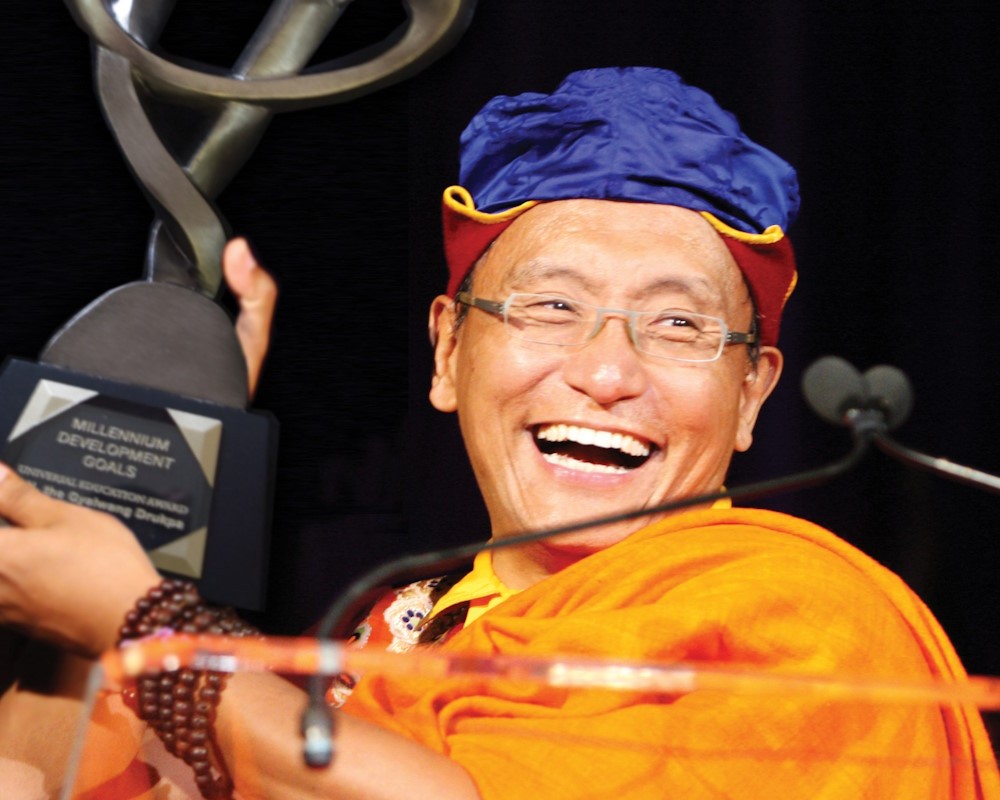Kagyu
The lineage of the Kagyu emphasizes the continuity of oral instructions passed on from master to student. The first syllable “Ka” refers to the scriptures of the Buddha and the oral instructions of the guru. “Ka” has the sense both of the enlightened meaning conveyed by the words of the teacher, as well as the force which such words of insight carries. The second syllable “gyu” means lineage or tradition. Together, these syllables mean “the lineage of the oral instructions.” The Drukpa Kagyu Lineage, part of the broader Kagyu tradition, traces its origins to the great Indian saint Tilopa and his disciple Naropa. Marpa, the renowned Tibetan translator, brought these teachings to Tibet, establishing the foundation for the Kagyu lineages.
Drukpa Lineage

The Drukpa Lineage, a revered tradition within Tibetan Buddhism, was established over 800 years ago in Tibet by the 1st Gyalwang Drukpa, Tsangpa Gyare Eshe Dorje. This lineage has since spread across the Himalayas, encompassing regions from Bhutan to Ladakh, through Nepal and Tibet. Renowned for the purity of its transmissions and yogic practices, the Drukpa Lineage traces its roots to the primordial Buddha Vajradhara.
The unbroken transmission from master to disciple has preserved the Drukpa Lineage’s purity through unwavering devotion. The lineage begins with Vajradhara, from whom Tilopa obtained full enlightenment. This lineage continued through Naropa, Marpa, Milarepa, Gampopa, Phagmo Drupa, Lingtchen Repa, and finally, Tsangpa Gyare.
Vajradhara – The primordial Buddha, the source of all manifestations of enlightenment.
Tilopa (988-1069) – Received teachings directly from Vajradhara and is one of the most renowned Indian Mahasiddhas.
Naropa (1016-1100) – Trained with Tilopa and became a great master of Mahamudra and Tantra.
Marpa Lotsawa (1012-1097) – The translator who brought the teachings to Tibet and is the source of the Kagyu school.
Milarepa (1040-1123) – A famous yogi, poet, and saint, known for his life of meditation and enlightenment.
Gampopa (1079-1153) – Brought together the Kadam tradition of Atisha and the Mahamudra tradition of Milarepa.
Phagmo Drupa (1110-1170) – Founded the first Kagyupa Monastery in Southern Tibet and spread Gampopa’s teachings.
Lingchen Repa (1128-1188) – Known as the Saraha of Tibet, he was the source of the Lingre Kagyu lineage.
Tsangpa Gyare Yeshe Dorje (1161-1211) – Founded the Drukpa Kagyu lineage and established the lineage centered at Ralung.

In the twelfth century, Avalokiteshvara, the Great Lord of Universal Compassion, manifested in Tibet as the outstanding disciple of Mahasiddha Lingchen Repa. This sublime being, known as Drogon Tsangpa Gyare, was born in the land of Tsang and was a cotton-clad yogi. The name “Drukpa” originates from the Tibetan word “Druk,” meaning “Dragon” or “Thunder.” In 1206, Tsangpa Gyare saw nine dragons fly into the sky from the ground of Namdruk, inspiring him to name his lineage “Drukpa” or “lineage of the Dragons.”
Tsangpa Gyare was prophesized in many Sutras and Tantras and recognized as the indisputable emanation of Naropa. His spiritual attainments were remarkable, and he became known as Druk Tamchay Khyenpa, the Omniscient Dragon. His teachings attracted thousands, and he had 88,000 eminent followers, including 28,000 enlightened yogis.
The Kingdom of Bhutan, known as “Druk Yul” or “the Land of the Thunder Dragons,” adopted the Drukpa Lineage in the 17th century. Shabdrung Ngawang Namgyal, the fourth incarnation of Tsangpa Gyare, united Bhutan and became its political and religious leader. His reign saw the construction of many fortress palaces and monasteries, forging a unique cultural identity distinct from Tibet.
Nowadays the spiritual head of Drukpa Kagyu Lineage is His Holiness the 12th Gyalwang Drukpa. He was born in 1963 at Tso Pema in India. He is an authentic and realized Master who exemplifies the pure tradition of the Yogic Lineage. Known for his modern approach, simplicity, and the profound depth of his teachings, His Holiness continues to inspire and guide practitioners worldwide.
